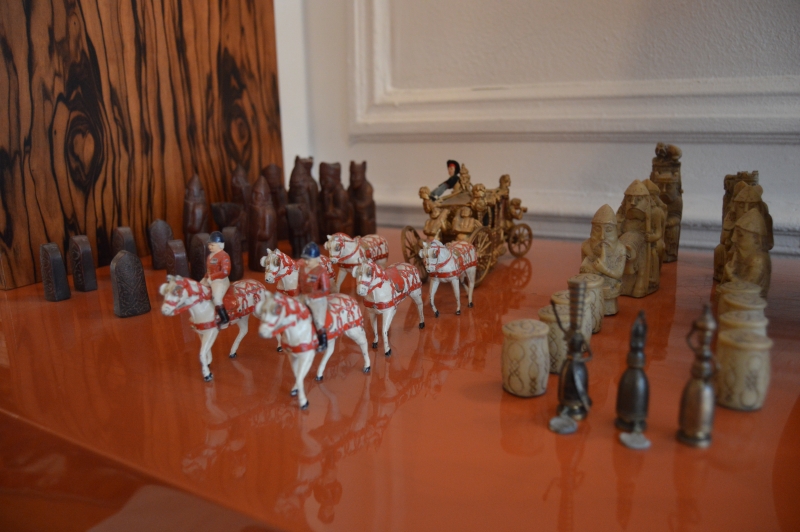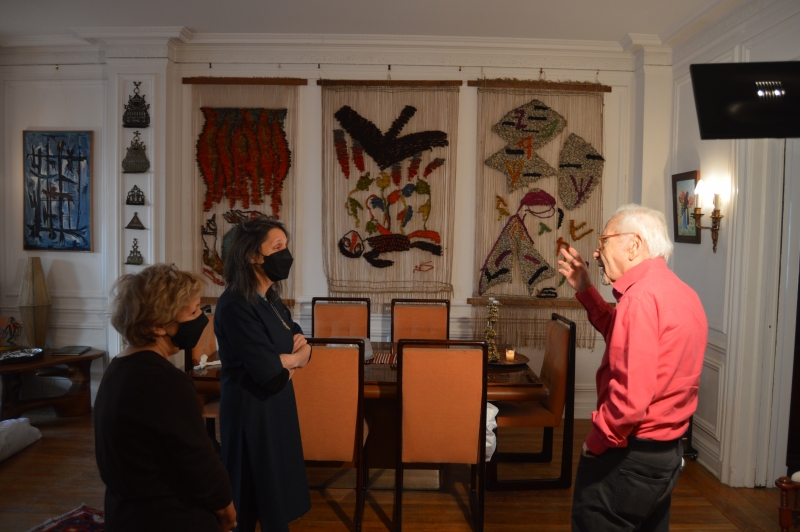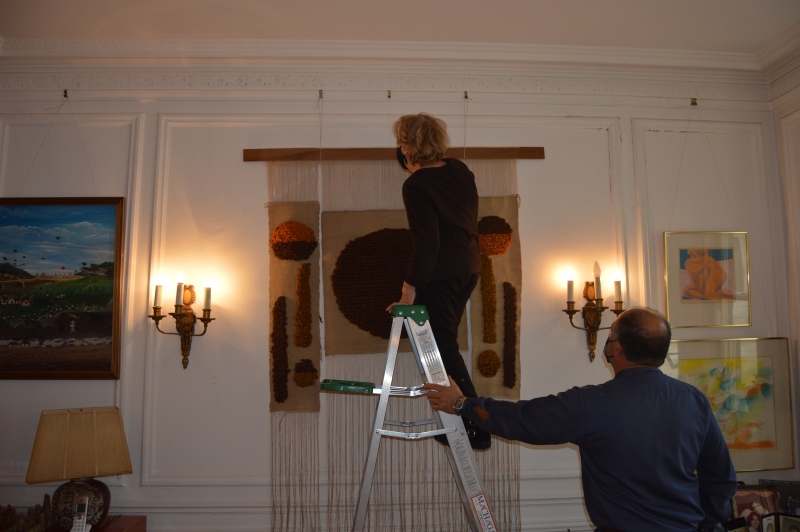Conserving Shoshana Comet's Woven Work

The first thing you notice about Ted Comet’s apartment is, well, everything. On every wall, every shelf, from floor to ceiling, there are works of art that span centuries adorning this Upper West Side home. Interspersed between tall, lanky sculptures of African giraffes and miniature figures of soldiers and horses are meditative, sentimental objects – shelves stuffed with textbooks on Jewish civilization and awards given to family members for excellence in art, academia, and public service. Next to a rocking chair which sits two crocheted clowns is a wood-and-glass coffee table overflowing with family photos. It is clear that whoever has lived here has two passions: art and love.

Among the thousands of impressive works of sculpture, print, and visual art, no piece of art in the space is bigger or more impressive than the five woven works hanging throughout the entrance hall, living room, and dining area. These five tapestries were made by Shoshana Comet, a self-taught weaver who used tapestry to illustrate her life and trauma as a holocaust survivor before turning to a career in psychotherapy. Shoshana only made these five works across three years before putting her loom away forever. As Ted puts it, creating these pieces was Shoshana's only way to "unshackle herself" from her traumatic childhood.

Since Shoshana’s passing in 2012, her husband Ted Comet has dedicated his life to sharing Shoshana’s story with the world – leading tours of his home and sharing Shoshana’s work with school groups, Jewish organizations, and international art communities. On my visit, Ted meticulously walked me through all five of his wife's works, describing her thought processes, explaining each visual element, and sharing beautiful details with me about Shoshana's character.
He lovingly described her as a "professional listener," and laughed when he reminisced about how she could "tell someone off and they'd walk away smiling." Before showing me a recording of a talk Shoshana gave at the World Counsil of Jewish Communal Service in 1988, Ted told me "I'd like you to meet her." It was abundantly clear to me that Ted does not want people to simple remember Shoshana, he wants them to know her.

Over the last 50 years of display and appreciation, the five tapestries have sustained various kinds of deterioration. Shoshana was self-taught, and produced large-scale works with no assistance or formal training. Just as each piece has its own personality, each piece has its own structural and visual concerns including warping, loosening, and tangling. In certain areas of each piece, dirt or damage diminish the effects that Shoshana strove to convey. Shoshana explored unique textures and fabrics in her weaving to illustrate materials like rocks, flames, metals, flowers, and blood. The Textile Conservation Lab has faced the complicated task of cleaning and preserving the tapestries, without impacting their amateur qualities.
Shoshana's impressive technical improvement from the beginning to the end of the series — sometimes from the beginning of a single piece to the end of it — is a critically important element which represents the healing quality that artmaking had on her life. At one point in her process, she experienced psychosomatic paralysis in her right arm which threatened to halt her artmaking altogether. Once she completed weaving such painful memories, the paralysis disappeared. Conserving these works must take into account subject matter when considering treatment methods, to avoid affecting the tapestries' stories.

The Textile Conservation Lab has taken on the intense project of cleaning and conserving each of the five tapestries, diagnosing and treating all of the issues that impact the appearance and durability of the works. These processes include wet cleaning, dry cleaning, sponge cleaning, and fine combing of the fibers. It also includes examining the hanging structures of each work. Sometimes, the way a piece is hung can unnecessarily contribute to stress or damage to the work. On my first visit to Ted's apartment, the Cathedral conservators were delivering and reinstalling Tapestry #2, "An Ideal World," whose original hanging structure contributed to some stress and distortion of the work.

The process has only just begun. The Textile Conservation Lab still has two works left to clean and conserve before they have completed this massive undertaking.